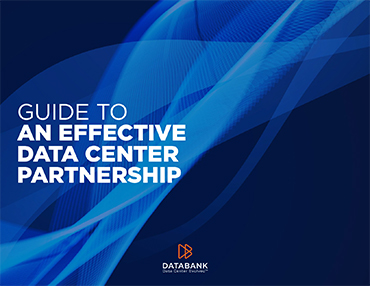Colocation costs can generally be grouped into three main categories. These are:
- Real-estate costs
- Implementation costs
- Operational costs (especially staff, utilities, and ongoing upgrades)
Generally, these costs are paid initially by the colocation vendor and passed on to clients in a way that reflects their usage of the service.
This means that getting the best value out of colocation typically depends on two key factors. Firstly, businesses need to find a colocation service provider that is committed to delivering great value for money. Secondly, businesses need to deploy the most appropriate solution for their business. In particular, they need to ensure that their provisioning accurately reflects their business’ situation.
Factors influencing colocation costs
Here is a more detailed overview of the five key factors that influence colocation costs.
Location and space
The geographical location of the data center can significantly impact colocation costs. Data centers in major metropolitan areas or regions with high demand for IT services may charge higher rates compared to those in less populated areas.
Likewise, the amount of physical space a business needs for its servers and equipment directly affects the cost. Larger setups will naturally incur higher costs.
Power delivery
There are four key factors that influence the cost of power delivery. The first is the colocation service provider’s ability to generate their own energy. The more energy they can generate on-site, the less they need to buy from utility companies. The second is the colocation service provider’s ability to negotiate attractive deals for the power they do buy.
The third is the colocation service provider’s ability to manage power distribution effectively. The more they can optimize their use of power, the lower their running costs tend to be. The fourth is the colocation service provider’s level of redundancy. Implementing redundancy increases costs but it also increases resilience.
Cooling solutions
Colocation service providers that implement advanced cooling solutions may charge a premium for these. With that said, this premium can be more than offset by the reduction in power (and sometimes) water costs these solutions deliver. Also, these solutions tend to be significantly more sustainable than legacy cooling options.
Connectivity
To a certain extent, connectivity is linked with location. Essentially, the carrier options available in a colocation facility will be at least partly determined by where it is located. A lot, however, is down to the quality of the colocation vendor. For example, the colocation vendor will determine whether or not the colocation facility is carrier-neutral. It will also choose the infrastructure and determine how it is deployed (e.g. what networking protocols are used).
Value-add services and infrastructure
If a business needs a colocation vendor to go beyond the basic requirements of a colocation service, then it will probably need to pay extra. For example, if a business needs remote-hands support and/or managed services, these will come at a cost. Similarly, if it needs very specialist infrastructure (e.g. quantum infrastructure), there will be a price premium for them.
The importance of scalability
As previously mentioned, the exact cost of colocation services tends to be linked to usage. In some cases, the link is direct whereas in others it is implied.
Direct links are typically used on metered tariffs such as many pay-as-you-go tariffs. With these tariffs, usage is measured and charged at a specified rate (which may be tiered).
Indirect links are typically used on tariffs that have usage allowances or are all-inclusive. Businesses may not be charged for the exact amount they use. The amount they are charged will, however, cover their expected use.
This means that scalability is often key to getting maximum value out of colocation services. Firstly, colocation facilities need to be physically able to support businesses as their infrastructure requirements change.
Secondly, colocation service providers have to be willing to service clients with changing needs. For example, they need to offer different price tariffs and different contracts. There also need to be simple and transparent mechanisms for making changes to tariffs and/or contacts.
Understanding service level agreements (SLAs)
Service Level Agreements (SLAs) outline the specific performance standards, service quality, and operational parameters that the provider commits to maintaining. The terms and guarantees stipulated in SLAs play a significant role in determining colocation costs. Here are some of the areas they typically cover.
Performance guarantees: SLAs often include guarantees related to the performance of the data center infrastructure, such as uptime, latency, and response times. Higher levels of guaranteed performance typically result in higher costs, as the provider needs to invest more in redundant systems, high-quality equipment, and robust network infrastructure to meet these commitments.
Reliability and redundancy: To fulfill stringent SLA requirements, colocation providers may implement redundant power supplies, cooling systems, and network connections. This redundancy ensures that any single point of failure does not disrupt service, which can increase operational costs and, consequently, the price charged to clients.
Support and response times: SLAs often specify the level of support and the maximum allowable response times for addressing issues or emergencies. Premium support services, such as 24/7 technical support and rapid response times, require maintaining a highly skilled support team, leading to higher colocation costs.
Compensation for downtime: Many SLAs include provisions for compensating clients in case the provider fails to meet the agreed-upon performance standards, such as service credits or financial penalties. Providers that offer more comprehensive compensation packages may charge higher rates to cover potential liabilities.
Customization and flexibility: Some colocation providers offer customizable SLAs that allow clients to select the level of service that best fits their needs. More tailored and flexible SLA options can lead to higher costs due to the additional resources and management required to accommodate specific client requirements.
The DataBank uptime guarantee
The industry standard uptime guarantee is “five nines” in other words, 99.999% uptime. DataBank, however, offers a 100% uptime guarantee. We back this with four key measures.
Redundancy: This is arguably the foundation of all reliability and, hence, uptime guarantees. We implement extensive redundancy, especially for power and networking.
Monitoring: Our automated monitoring systems are overseen by human staff, who are on-site 24*7*365. This means we can identify potential issues in the shortest possible time and hence give ourselves the best chance of resolving them before they become serious.
Security: Our robust physical and digital security measures minimize the risk of security incidents. This not only ensures that confidential data remains protected but also that a source of disruption is contained.
Disaster recovery: We have robust processes and systems in place to cope effectively with any unexpected event.
Low cost colocation solutions
Our colocation offering can be scaled to any size from single racks to spacious private suites. We also support extensive customization to give you as many options as possible for lowering your costs. Here are some measures you can implement.
Optimize space utilization
Careful planning of server placement, including the use of modular and scalable designs, helps make the best use of space. Additionally, deploying virtualization technology enables multiple server instances to run on a single physical server. This reduces the overall number of physical machines required and hence the need for space.
Integrate with the cloud
Integrating with public cloud services enables businesses to expand their resources on demand (e.g. at peak times). This reduces the need for businesses to invest in their own equipment and to pay for space to house it.
Energy Efficiency
Businesses can achieve energy efficiency by investing in energy-efficient hardware that consumes less power and produces less heat, thereby reducing cooling requirements.
Advanced cooling techniques, such as hot aisle/cold aisle containment, liquid cooling, and free cooling, can further improve efficiency.
Additionally, regular maintenance and monitoring of equipment ensure optimal performance and energy use. Implementing energy-saving practices not only cuts down on utility bills but also aligns with sustainability goals, providing both economic and environmental benefits.
Review and optimize network requirements
Regularly reviewing and optimizing network requirements can help businesses manage their colocation expenses more effectively. This involves assessing actual bandwidth usage to ensure that the business is not overpaying for unused capacity.
By implementing bandwidth management techniques like data compression, traffic shaping, and the use of content delivery networks (CDNs), businesses can reduce the amount of data transferred, lowering costs.
Additionally, negotiating with providers for more cost-effective bandwidth packages and ensuring that network infrastructure is up-to-date can prevent bottlenecks and ensure efficient data flow, maintaining performance while controlling expenses.
Take advantage of value-added services
These services might include bundled packages that combine backup, disaster recovery, and enhanced security at a reduced rate compared to purchasing each service separately.
Remote hands services, where the provider’s staff performs routine maintenance and troubleshooting, can also save on travel and labor costs.
By taking advantage of these bundled and remote services, businesses can optimize their colocation experience, ensuring they receive comprehensive support and robust infrastructure management without incurring additional expenses.
Are you ready to optimize your IT infrastructure and reduce your operational costs? Discover how our budget-friendly colocation solutions can help your business thrive without compromising on performance or reliability. Contact us today to learn more about our customizable packages and take advantage of our transparent pricing.







